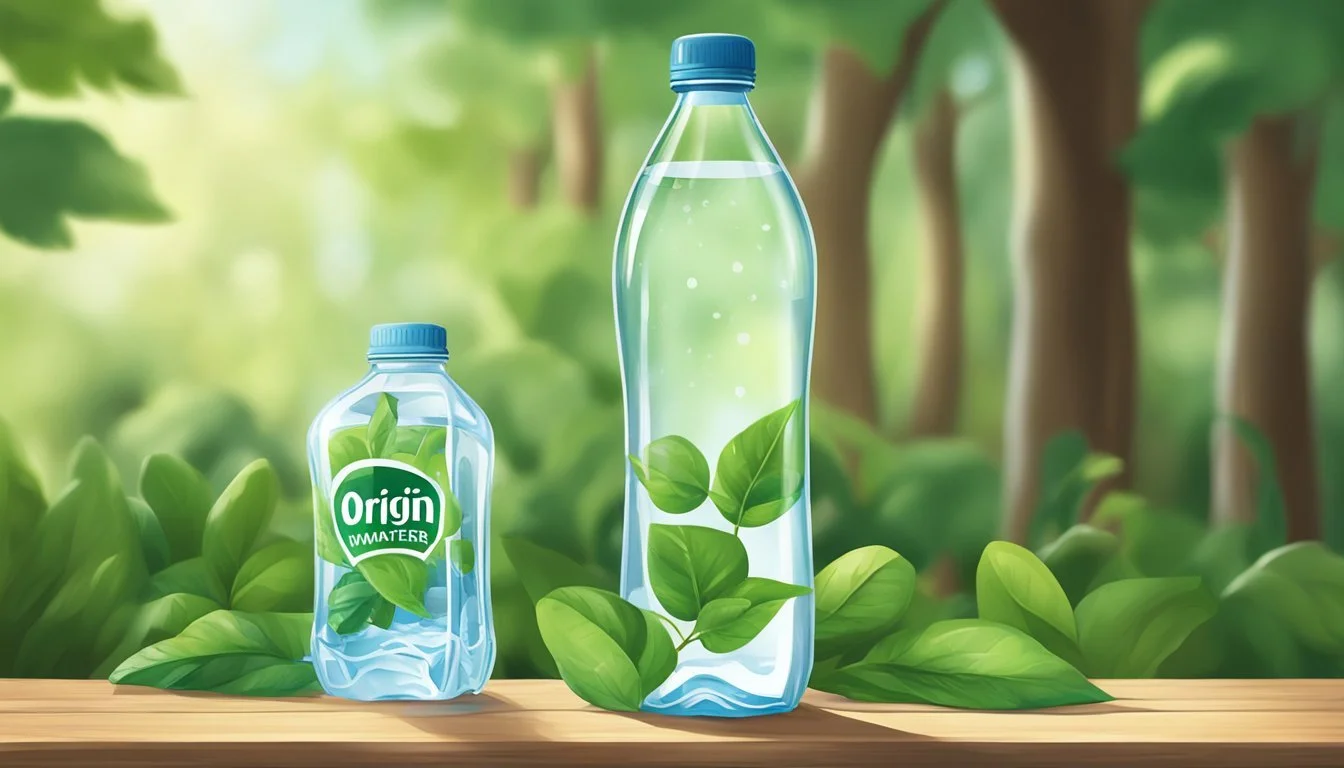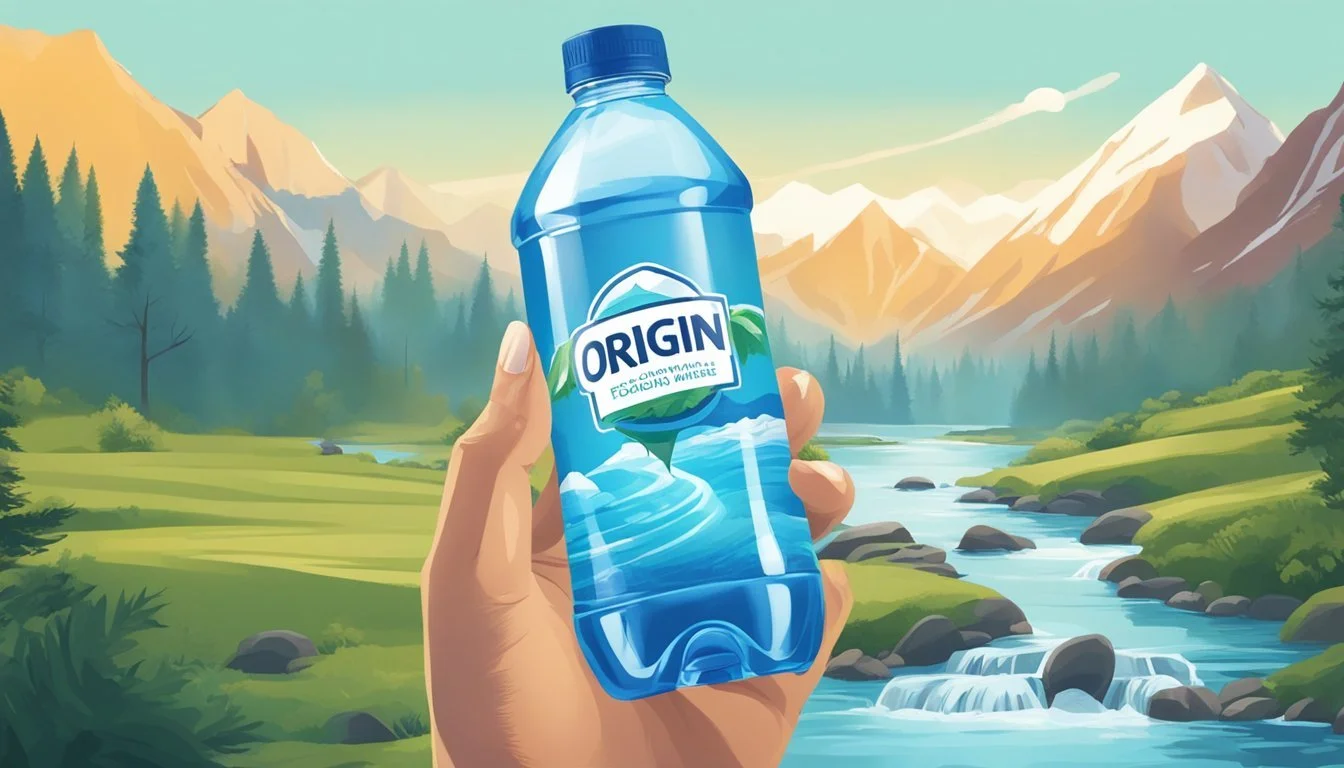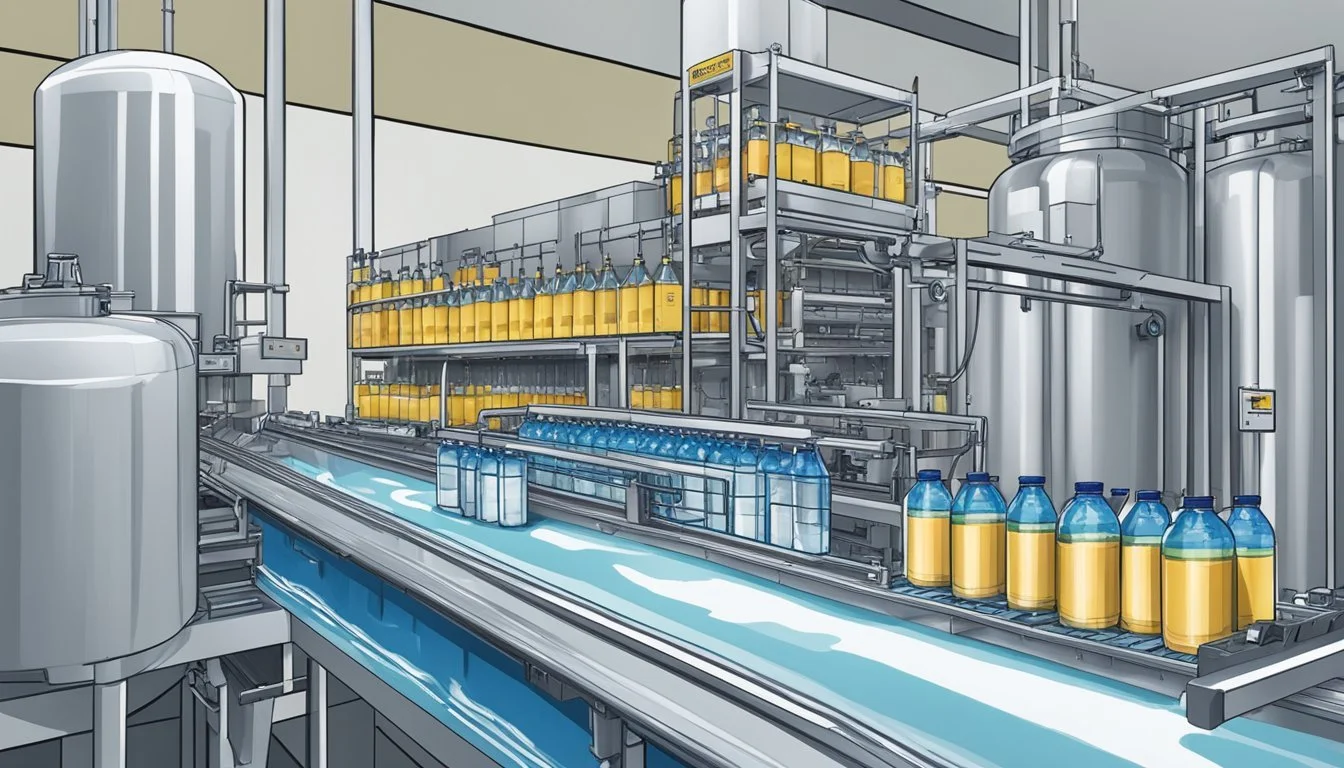Is Origin the Best Bottled Water?
Tracing the Source of Pure Hydration
Origin bottled water brings a refreshing taste of American springs to consumers nationwide. This premium spring water brand sources its product from carefully selected natural springs across the country, ensuring a crisp and pure drinking experience. Origin's 100% natural spring water is responsibly sourced and bottled at the source, preserving its natural mineral content and flavor.f
The brand offers both still and sparkling varieties, catering to different preferences. Origin's sparkling water includes options with organic natural flavors, appealing to those seeking a hint of taste without artificial additives. The company's commitment to quality extends beyond the water itself, as they utilize recycled plastic bottles for packaging, demonstrating a focus on environmental sustainability.
Origin water is available through various retail channels, including online platforms and local stores. This accessibility allows consumers to enjoy the taste of pristine American spring water in their homes or on the go. With its emphasis on natural sourcing and responsible practices, Origin aims to provide a premium bottled water option for those who value both quality and environmental consciousness.
Understanding Bottled Water
Bottled water comes in various types and has specific terminology associated with it. Consumers can make informed choices by learning about water classifications and key labeling terms.
Classification of Bottled Water
Bottled water is classified into several categories based on its source and processing. Spring water originates from underground formations and flows naturally to the surface. Purified water undergoes distillation, deionization, or reverse osmosis to remove impurities.
Mineral water contains at least 250 parts per million total dissolved solids from a protected underground source. Artesian water comes from a well tapping a confined aquifer. Sparkling water contains the same amount of carbon dioxide it had at emergence from the source.
Bottled Water Terminology
Key terms help consumers understand bottled water products. "Purified" indicates the water has been treated to remove chemicals and pathogens. "Distilled" means the water was vaporized and recondensed to remove impurities.
"Alkaline" water has a higher pH level than regular water. "Flavored" water contains natural or artificial flavors. "Enhanced" water is fortified with vitamins, minerals, or electrolytes. "Raw" or "live" water is untreated and may contain microorganisms.
Labels may also indicate the water's source, such as "mountain spring" or "glacier melt." Understanding these terms allows consumers to choose bottled water that meets their preferences and needs.
The Origin of Bottled Water
Bottled water has a rich history dating back centuries, evolving from luxury to everyday convenience. Its journey spans from natural springs to modern production methods.
Historical Perspective
The concept of bottled water originated in the 17th century. People began using jugs and glass bottles to transport water from distant regions. In 1767, the first commercial bottled water operation in the United States started at Jackson's Spa in Boston.
Natural springs gained popularity for their perceived health benefits. American springs became sought-after sources, with people traveling to drink directly from these natural water sources. As demand grew, entrepreneurs saw an opportunity to bottle and sell this water to a wider audience.
By the late 18th century, bottled spring water had become a luxury item, primarily consumed by the wealthy. Its popularity continued to grow throughout the 19th century as concerns about water quality in urban areas increased.
Modern Production of Bottled Water
The 1970s marked a significant shift in bottled water production. The invention of polyethylene terephthalate (PET) bottles in 1973 revolutionized the industry. These plastic bottles were cheaper and more durable than glass, making bottled water more accessible to the masses.
PET bottles democratized the bottling process, allowing small start-up companies to thrive. This led to major growth in discounted store brands. The affordability of PET packaging sparked a bottled water boom that continues today.
In 1977, a successful marketing campaign renewed interest in bottled water, emphasizing its health benefits and image. This campaign, combined with the new packaging technology, set the stage for the massive growth of the bottled water industry in the following decades.
Today, over 500 billion plastic water bottles are produced annually worldwide. The industry has expanded to include various types of bottled water, from spring water to purified tap water, catering to diverse consumer preferences.
Exploring Natural Spring Water
Natural spring water emerges from underground aquifers, offering a pure and refreshing hydration option. This water contains naturally occurring minerals and electrolytes, making it a popular choice for bottled water enthusiasts.
Extraction and Bottling
Natural spring water is collected directly from its source. Companies like Origin™ responsibly source their water from American springs. The extraction process involves capturing the water as it flows naturally to the surface or through carefully drilled boreholes.
Strict quality controls ensure the water's purity is maintained throughout the bottling process. Filtration systems remove any potential contaminants while preserving the water's natural mineral content. The bottling facilities adhere to rigorous sanitation standards to protect the water's integrity.
Many brands, including Origin™, use eco-friendly packaging materials to reduce environmental impact. Some offer various bottle sizes to suit different consumer needs, from single-serve options to larger containers for home use.
Health Benefits and Minerals
Natural spring water contains a variety of minerals that can contribute to overall health. These may include calcium, magnesium, and potassium. The mineral content varies depending on the spring's geological characteristics.
Electrolytes present in spring water help maintain proper hydration and support bodily functions. Some brands, like Origin™, highlight the naturally occurring electrolytes in their products.
Spring water's crisp taste comes from its mineral composition. This can make it more appealing than tap water for many consumers. The absence of added chemicals like chlorine, often used in municipal water treatment, is another benefit.
Organic options are available from some brands. These products use natural flavors derived from organic sources, catering to health-conscious consumers seeking clean label products.
Unique Qualities of Origin™ Products
Origin™ stands out in the bottled water market with its commitment to natural spring water and innovative product offerings. The brand focuses on quality sourcing and premium packaging to deliver a superior drinking experience.
Origin™ Sparkling Water
Origin™ sparkling water sets itself apart with its fine bubbles and effervescent tingle. The brand adds carbon dioxide to its natural spring water, creating a refreshing fizz. Origin™ uses organic natural flavors to enhance its sparkling water varieties. Popular options include lime and peach, offering a subtle taste without overpowering the water's crisp essence.
The sparkling water's carbonation level is carefully balanced. It provides a pleasant sensation without being too aggressive. This makes Origin™ sparkling water suitable for drinking on its own or as a mixer in cocktails and mocktails.
Packaging and Product Varieties
Origin™ offers its products in premium packaging designed for convenience and sustainability. The brand's 900ml bottles are recyclable, aligning with eco-conscious consumer preferences. These larger bottles are ideal for sharing or extended hydration needs.
For on-the-go consumption, Origin™ also produces aluminum cans. These are lightweight, portable, and infinitely recyclable. The cans come in various sizes to suit different occasions and consumer preferences.
Origin™'s product line includes both still and sparkling water options. This variety allows consumers to choose their preferred water type for different situations. The brand's commitment to quality extends across all its offerings, ensuring a consistent experience regardless of the chosen product or packaging.
Sustainability and Environmental Responsibility
Origin bottled water prioritizes sustainability and environmental stewardship through innovative practices and responsible resource management. The company focuses on conservation efforts and sustainable packaging to minimize its ecological footprint.
Conservation Initiatives
Origin implements comprehensive water conservation programs at its source locations. The company carefully monitors groundwater levels and recharge rates to ensure long-term sustainability of aquifers. Advanced filtration systems reduce water waste during the bottling process.
Origin partners with local conservation groups to protect watersheds and surrounding ecosystems. The company funds reforestation projects and habitat restoration initiatives near its water sources. These efforts help maintain biodiversity and natural water purification processes.
Employee education programs promote water-saving practices both at work and at home. Origin also supports community water conservation awareness campaigns in areas where it operates.
Sustainable Packaging Solutions
Origin utilizes responsibly sourced, plant-based materials for its bottles and caps. These bioplastics are derived from renewable resources like sugarcane and corn, reducing reliance on fossil fuels.
The company's bottles are designed to be 100% recyclable. Origin has invested in closed-loop recycling systems to recover and reprocess used bottles into new ones. This reduces waste and conserves raw materials.
Lightweight bottle designs minimize plastic use while maintaining durability. Origin's packaging facilities employ energy-efficient equipment and processes to reduce carbon emissions during production.
The company encourages consumers to recycle through clear labeling and partnerships with local recycling programs. Origin also supports the development of improved recycling infrastructure in underserved areas.
Consumer Experience with Bottled Water
Bottled water plays a significant role in many consumers' daily hydration routines. Its popularity stems from convenience, perceived quality, and taste preferences.
Hydration and Health
Bottled water provides a readily available source of hydration for consumers on-the-go. Many choose it as a calorie-free alternative to sugary drinks. Some bottled water brands, like Origin, offer slightly alkaline pH levels around 7.8, which appeals to health-conscious consumers.
Bottled water's portability makes it easy for people to track their daily water intake. This convenience factor often leads to increased water consumption throughout the day.
Some consumers believe bottled water is safer than tap water, though this perception isn't always accurate. In reality, both bottled and tap water in developed countries typically meet safety standards.
Taste and Refreshment
Taste is a key factor in the bottled water experience. Many consumers report preferring the taste of certain bottled water brands over tap water or other alternatives.
Origin water, for example, is positioned as a premium brand, suggesting a superior taste experience. This perception often justifies its higher price point compared to more budget-friendly options like Aquafina.
The temperature of bottled water can significantly impact the drinking experience. Chilled bottled water often provides a more refreshing sensation, especially in warm weather or after physical activity.
Some consumers appreciate the consistency in taste that bottled water brands offer, as the flavor remains uniform regardless of location. This contrasts with tap water, which can vary in taste depending on local water sources and treatment methods.
Product Availability and Distribution
Origin bottled water is widely accessible through various retail outlets and online platforms. Consumers can purchase individual bottles or cases through traditional stores and e-commerce sites. Subscription services offer a convenient option for regular home or office delivery.
Retail and Online Sales
Origin water is available at major grocery chains, convenience stores, and big-box retailers across the United States. Consumers can find single bottles in refrigerated cases for immediate consumption or purchase multi-packs and cases for home use. Online marketplaces like Amazon and Walmart.com also stock Origin water, allowing for easy ordering and home delivery.
Many retailers offer competitive pricing on Origin water, especially when purchased in bulk cases. Some stores feature Origin prominently in beverage aisles or special displays during promotional periods.
Subscription Services
Origin partners with ReadyRefresh, a beverage delivery service, to offer subscription options for regular home and office delivery. Customers can choose from various package sizes and delivery frequencies to suit their needs.
Subscription plans typically include options for 3- and 5-gallon bottles with dispenser rentals available. This service is particularly popular for offices and households that consume large quantities of water regularly.
Subscribers often benefit from discounted pricing compared to retail purchases. The convenience of scheduled deliveries ensures a steady supply of Origin water without the need for frequent store trips or heavy lifting.
The Science of Carbonation in Beverages
Carbonation is the process that gives sparkling water and soft drinks their signature fizz. It involves dissolving carbon dioxide gas into liquid under pressure to create bubbles and a tingling sensation.
Carbonation Process
Carbon dioxide is forced into water under high pressure, where it dissolves and forms carbonic acid. When the container is opened, the pressure drops suddenly. This causes the dissolved CO2 to rapidly form bubbles that rise to the surface.
Temperature affects carbonation levels. Colder liquids can hold more dissolved gas, which is why carbonated drinks are often served chilled. The amount of carbon dioxide used determines how fizzy the beverage will be.
Carbonation equipment in bottling plants precisely controls gas pressure and liquid temperature. This ensures consistent bubble formation across batches of beverages.
Health Effects of Carbonated Water
Plain carbonated water is a calorie-free, sugar-free beverage option. It can help with hydration for those who prefer bubbles to still water. Some studies suggest it may aid digestion and provide a feeling of fullness.
The carbonic acid in sparkling water is very weak. It does not significantly affect tooth enamel or bone health when consumed in moderation. However, flavored carbonated drinks often contain acids that may be more erosive.
Carbonated water can cause bloating or gas in some people. Those with digestive sensitivities may want to limit intake. Overall, plain sparkling water is considered a healthy alternative to sugary sodas for most individuals.









